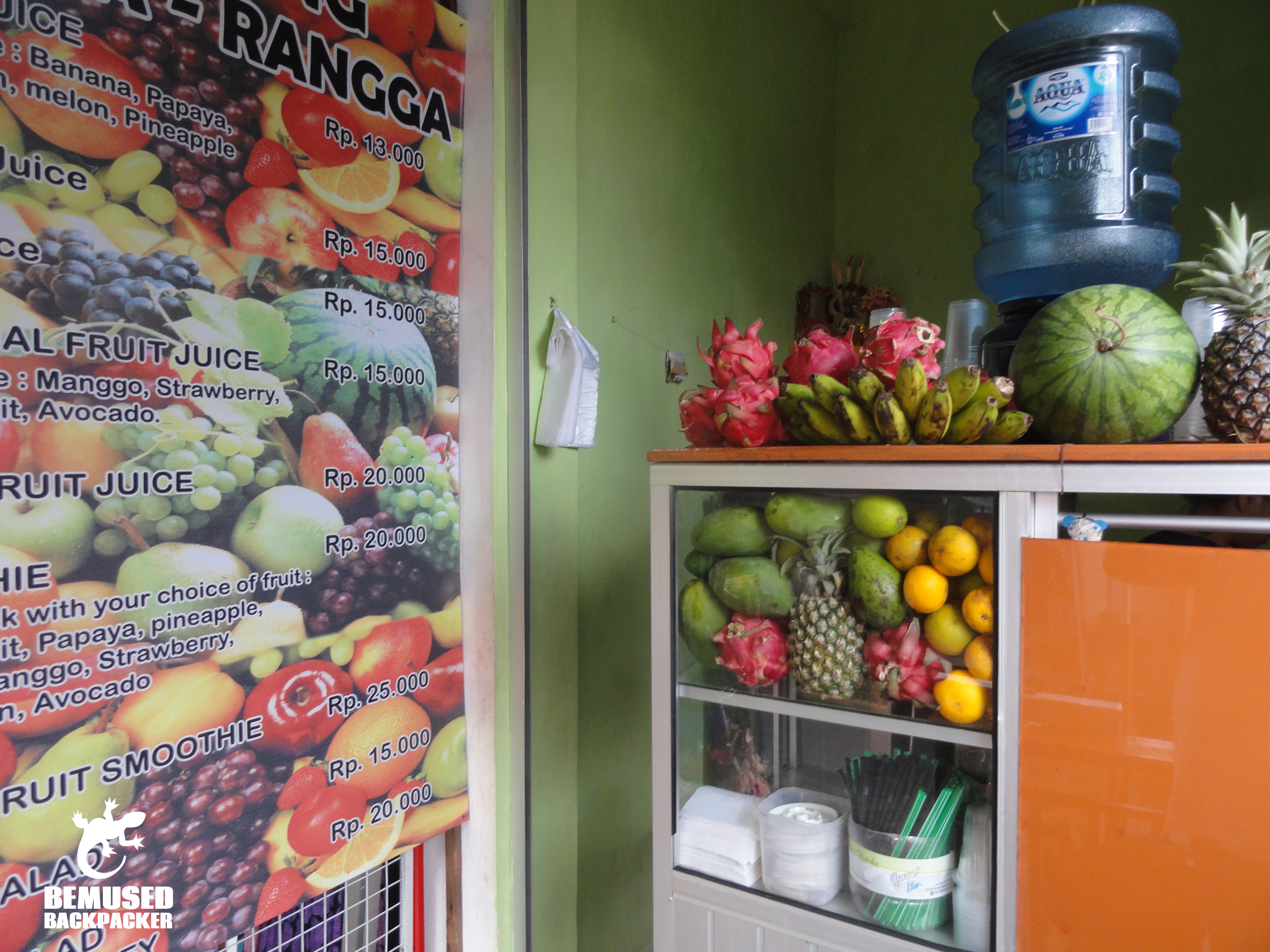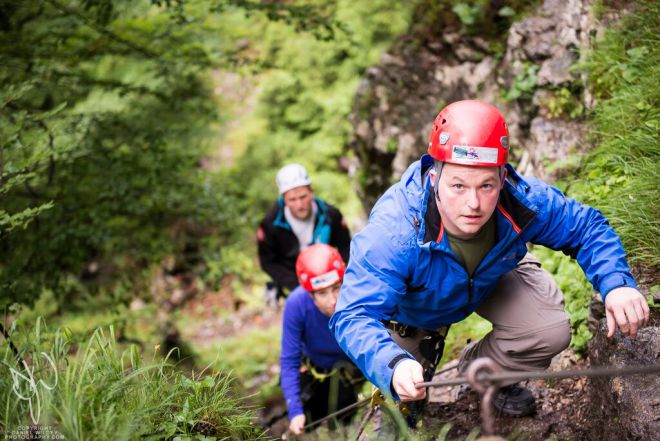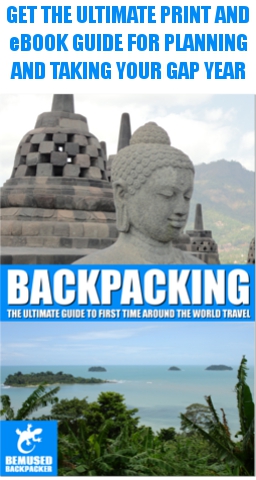
Getting fit and healthy or even maintaining a healthy lifestyle when you are travelling the world is often seen as difficult if not impossible. Nothing could be further from the truth. You can stay fit, lose weight, eat healthy and get fitter and stronger all while travelling the world, and once you get used to it, it’s easy. You just need the right knowledge and the right motivation. Here’s how you can get both.
A lot of people seem to think that backpacking the world is an unhealthy pastime, that taking a gap year will somehow be bad for your health and fitness. Many assume that once they are away from their air conditioned gyms and Weight Watcher labelled ‘diet food’, and in the land of ultra cheap and ultra tasty street snacks and alcohol fuelled beach parties, that they will arrive back on home turf a year or so later older, wiser and with a waistline larger than the circumference of their journey.
This is a complete fallacy. Of course there is the temptation to let yourself go on the road, but it really is amazingly easy to stay – or get – fit and healthy on your gap year travels.
Travel does not in any way mean that you have to abandon your health or fitness goals, or even that you can’t start living a healthy, fit lifestyle. You don’t need an expensive gym membership or weekly meetings, you don’t need expensive equipment or supplements. It really is very simple to stay fit and healthy, all you need is a basic understanding of how to do exactly that.
Diet

No I don’t mean taking up one of those ridiculous celebrity fad diets in those drivel filled magazine articles. Those desperately pathetic ‘diet regimes’ which encourage you to make yourself ill eating nothing but cabbage or cutting out carbs completely, or signing up to one of those programmes where everything you eat is reduced to ‘points’ and you go to a luvvie fille hugathon every week for the ritual humiliation of being weighed in front of complete strangers.
The term ‘diet’ is just that, it is just a term used to describe what we eat and drink on a daily basis. It is not a specific way of eating or a period of time eating a specific type of food.
So I’m going to let you in on a little health secret that no one in the ‘diet’ industry will want you to know.
You don’t need to follow a plan. You don’t need to eat only ‘specially prepared’ pre packaged meals, you don’t need to follow a set diet plan or pay out vast amounts of money each week to get weighed and get a round of applause from a load of people you don’t know, unless you really enjoy that sort of thing. You don’t even need to deny yourself certain foods! You just have to eat a healthy, balanced diet, and the truth is that is extremely easy to do when you are backpacking.
A healthy diet consists of three basic components, and you should have in each meal a little protein from meat or fish for example, a small amount of carbohydrates from things such as pasta, rice, bread or potatoes, and a lot of vitamins and minerals from fresh fruit and vegetables. There are other essential things such as fibre, but let’s just stick to the basics for now.
It is so easy when travelling to choose healthy options, pick the fresh fish from the menu when you are on a tropical island and have heaps of fresh vegetables with it, savour the vegetable curries in India which is generally a vegetarians dream destination at the best of times, help yourself to as much of the tastiest and freshest fruit juices or smoothies from the myriad of juice stalls common across Asia, South and Central America and India.
Unless you are travelling in Western countries, then finding and eating Western fast food is more difficult and often much more expensive than eating fresh, healthy local fare, and eating fresh fruit is far easier and more appetizing in the heat of typical backpacker destinations such as SE Asia or South America than eating chocolate or junk food, which you generally have to go out of your way to find a 7/11 to get anyway.
In fact, backpacking the world can be sold as the ultimate fad diet. Just on the food I eat alone I have always stripped away a few percent of body fat on long journeys without even trying! And that is despite eating like a horse at every food stall and food court I can find! Healthy is healthy, it is as simple as that.
Basically speaking, backpacking makes taking the healthy diet option the easy choice, and all the chocolates, crisps, junk food and other rubbish that are in abundance at home really do become an occasional treat, which is what they should be anyway.
One of the main things that backpackers do that is detrimental to their health and waistline, not to mention their budgets, is drink. Alcohol is relatively expensive in most countries, and those travelling on a budget should be limiting themselves anyway unless they want to blow their entire months accommodation budget on whisky buckets, but those full moon parties and cosmopolitan clubs are always going to lure backpackers in, and who can resist a rum and pineapple drink in a coconut shell while swinging in a hammock on a tropical beach? Frankly there is absolutely nothing wrong with that. You are travelling the world, this will be one of the best times of your life and you should savour every moment. I wouldn’t for one minute suggest you shouldn’t go out and enjoy yourself, have a good night out once in a while, enjoy a beer with your meal, it’s fine. Just do it in moderation. Have beer or a wine one night with a meal, have a fruit juice for the next couple of nights. That really is all it takes.
Exercise

Apart from eating a healthy diet, a big part of staying fit and healthy is exercise, and this is very easy to do on the road. The key is understanding the three basic types and knowing how to apply the principles to the unique challenges of backpacking and being in new and different surroundings.
There are essentially three primary types of exercise.
- Flexibility exercises.
- Cardio (aerobic exercises).
- Strength training (anaerobic exercise).
These three types between them cover the human body’s entire holistic fitness needs, including the numerous categories of physical skills that the human body requires to function, cardiovascular and respiratory endurance, strength, flexibility, stamina, agility, power and balance.
What this means in reality is quite simple, to live a healthy, balanced lifestyle, you need to be strong, you need to be flexible and you need to be fit. There is no point in being an ultra strong body builder if you can’t climb a set of stairs without wheezing, or being able to complete a marathon easily if your body isn’t flexible or has poor posture. Whilst many of us will have a natural tendency to do more of what we enjoy most or more of what exercise best meets our fitness goals, and this is fine to some extent, it is a good idea to get a general balance and train in all different aspects of fitness.
Flexibility Training.

Flexibility is an essential function of the human body, and it is perhaps the single most overlooked aspect of any exercise programme. At best it is often relegated to a quick stretch before or after exercising, but this is a huge mistake. Flexibility can be a type of exercise regime in and of itself.
Stretching is a form of flexibility exercise that most people will be familiar with. Stretching utilises specific movements and poses to stretch the muscles elasticity, increase muscle tone, align the skeleton, increase flexibility and range of motion and improve balance. Stretching is absolutely essential to living a healthy, active lifestyle, and being flexible can improve your quality of life, and your exercise effectiveness.
Flexibility training is probably one of the easiest ways to stay fit when you are travelling. You need no equipment, very little space and just a basic knowledge of what to do. All you need is a bit of space. It can be the floor of your room, a quiet corner of a hostels garden area, a beach, it doesn’t really matter. As long as it is relatively peaceful and safe for you to do so, all you need is a tiny area where you can stretch out and perform your exercises.
Yoga and Tai Chi are excellent examples of what you can do to make flexibility training a workout in and of itself, and if you get used to stretching before and after a normal workout but want to take it up a notch, then there are very few things that are as good for doing just that.
If you have the time and foresight, then take a few classes near to your home before you leave just to learn the basics. Once you have the basics covered, then it is extremely easy to just take ten or twenty minutes in the morning just to practice them when you are travelling. You don’t need any special rooms, any equipment, or any other people around you. If you didn’t learn any before you started travelling, then that is fine, there are so many places where you can take a course to learn how to do it. Just take a few days or a week out of your long term travel plans to study Yoga at an Ashram in India or go to any public park in China and join in the early morning Tai Chi sessions. It really isn’t difficult to find somewhere to learn how to do it, and once you know the basics, you can practice it anywhere.
Cardio Training.
Cardio exercise is essential to living a healthy, balanced lifestyle. It is quite simply a vital component of fitness and health. This is the one stop miracle cure that most doctors and nurses would prescribe to our patients on a daily basis if we thought they would listen. Cardio exercise or aerobic exercise refers to any type of activity or process that generates aerobic energy, where when you are exercise, your heart beats and you start sweating, and blood pumps more to deliver oxygen to the muscles to keep you moving. Basically, the ability of your heart, lungs and organs to get, transport and use oxygen. Any exercise that you can sustain for a long period of time such as running, jogging, cross training, skiing, anything that gets your heart, lungs and muscles working is considered cardio.
When you are travelling this is perhaps one of the easiest ways to keep fit because there are so many varied ways you can do it. Going for a jog or a run is perhaps the most simple way, but taking a hike into the country, joining with an organised jungle, hill or mountain trek or any other type of activity is just as good too. Basically, any type of activity that gets your heart rate pumping and makes it harder for you to breath counts as good aerobic exercise.
Current guidelines state that you need to do at least 2 and a half hours of moderate intensity aerobic exercise a week. That is just half an hour a day, 5 days a week. It isn’t much time to give up when you weigh it up against what you will gain from doing so is it?
Strength Training.

Regardless of what a lot of people think, being healthy isn’t all about losing weight, it isn’t all about stripping away your body fat levels and putting the right food into your mouth, you need to train and maintain your muscles too. Don’t worry, this doesn’t mean pumping iron until you look like the Terminator, it just means doing the right type of exercise to ensure your body is working and functioning at its maximum potential, having a toned, muscular body that looks good is just a simple bonus, but one that most people tend to focus on as the aim.
Basically strength training uses skeletal muscular contraction through weights or other resistance to build the strength and size of your muscles. There are different methods available, weight lifting, either with free weights or machines, or body weight exercises which uses your own body weight as resistance instead of an actual solid weight.
Maintaining this type of exercise while travelling long term is a little more difficult than other types of exercise, but it isn’t impossible. Gyms are plentiful in hotels and other areas, and can be used for a small charge if you really want to use some free weights or machinery, but a much easier way is to use your own body weight and your own environment. Push ups, pull ups on tree branches or park climbing frames, using bottles of water as weights, it all helps. All you need to do is know the basics of how to perform each exercise.

Staying fit and healthy when you are backpacking your way around the world isn’t difficult, it isn’t impossible. In fact it is actually quite easy. All it takes is a little knowledge and some commitment. You have to make that conscious choice to exercise, to stay healthy, you have to want it! Make staying healthy and keeping fit as much a part of your life as travel, and you will soon find it just becomes part of your normal routine.
Did you enjoy this article? I would love to hear your thoughts in the comments section below or on my Facebook or Twitter pages and please feel free to share it with any or all of the social media buttons. If you want to get more great backpacking tips, advice and inspiration, please subscribe to updates via email in the box to your right.
Related Articles.
How To Lose Weight, Get Fit And Travel The World At The Same Time.
Naked Adventures In A Slovakian Spa.
Quick And Easy Tips On How To Exercise On Your Gap Year.
The Ultimate Guide To Hiking And Adventure Trekking On Your Gap Year.





Excellent advice and so true! Especially about the choice of fresh, healthy food when you are travelling! Do you have any exercise tips for someone who doesn’t like to exercise?
Keep your eyes peeled, next weeks post is about exactly that! How to exercise during your backpacking adventures! 😉
Thanks for the great advice. I will definitely try it out and hopefully can stay committed =) Oh and can’t wait for next weeks post… =)
You really are welcome I’m glad you liked it. I hope next weeks post inspires you as much! Thank you for reading and commenting!
Funny, I always feel healthier while I’m on the road. Always doing a lot of biking, hiking, trekking and eating local fruits (although occasionally I eat some local delicacies that are very unhealthy). I agree with you, it’s totally possible to travel and stay fit at the same time!
There’s absolutely nothing at all wrong with having an occassional treat as part of a healthy diet! 😉 I do it all the time! I know exactly what you mean though, many of tge tgings we do when travelling make us healthier without even realising it. Thanks for the comment Aggy. 🙂
The breakdown of different types of exercise in this post is so useful! I’m publishing a post about keeping fit whilst travelling tomorrow and will be sending readers your way for this excellent breakdown! Thanks again!
Thank you Katie! I’m really happy you found it useful and I hope your readers will too. 🙂
I like the look of flexibility training.
The best thing is you can do it anywhere with a little space and no equipment! 😉
Excellent post! I said in January I would get myself a bit more toned and fitter but haven’t got myself started! Ive just bought your book too
Thank you! That’s awesome. Hopefully it will help you get a bit fitter. 🙂
Excellent tips and recommendations! What exercise do you consider best for cardio training?
When travelling? Swimming is my preferred exercise as I try to minimise the heavy impact training like running, but any adventure sport like surfing, SUPing etc is amazing too, as is trekking and hiking to specific places (especially if there are plenty of steep inclines!)
I wish I had the self discipline to stay fit, I just love my food too much!
Haha, me too! That’s the good thing about exercise you can eat all you want and run it off!